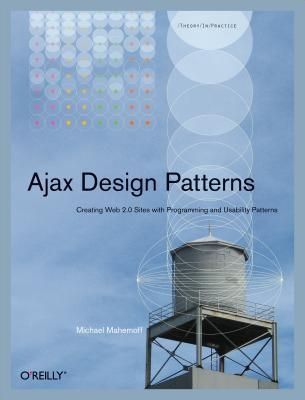
Ajax Design Patterns Creating Web 2.0 Sites with Programming and Usability Patterns
Ajax, or Asynchronous JavaScript and XML, exploded onto the scene in the spring of 2005 and remains the hottest story among web developers. With its rich combination of technologies, Ajax provides astrong foundation for creating interactive web applications with XML or JSON-based web services by using JavaScript in the browser to process the web server response. Ajax Design Patterns shows you best practices that can dramatically improve your web development projects. It investigates how others have successfully dealt with conflictingdesign principles in the past and then relays that information directly to you. The patterns outlined in the book fall into four categories: Foundational technology: Examines the raw technologies required for Ajax development Programming: Exposes techniques that developers have discovered to ensure their Ajax applications are maintainable Functionality and usability: Describes the types of user interfaces you'll come across in Ajax applications, as well as the new types of functionality that Ajax makes possible Development: Explains the process being used to monitor, debug, and test Ajax applications Ajax Design Patterns will also get you up to speed with core Ajax technologies, such as XMLHttpRequest, the DOM, and JSON. Technical discussions are followed by code examples so you can see for yourself just what is-and isn't-possible with Ajax. This handy reference will help you to produce high-quality Ajax architectures, streamline web application performance, and improve the userexperience. Michael Mahemoff holds a PhD in Computer Science and Software Engineering from the University of Melbourne, where his thesis was "Design Reuse in Software Engineering and Human-Computer Interaction." He lives in London and consults on software development issues in banking, health care, and logistics. "Michael Mahemoff's Ajax Design Patterns is a truly comprehensive compendium of webapplication design expertise, centered around but not limited to Ajax techniques. Polished nuggets of design wisdom are supported by tutorials and real-world code examples resulting in a book thatserves not only as an intermediate to expert handbook but also as an extensive reference for building rich interactive web applications." --Brent Ashley, remote scripting pioneer